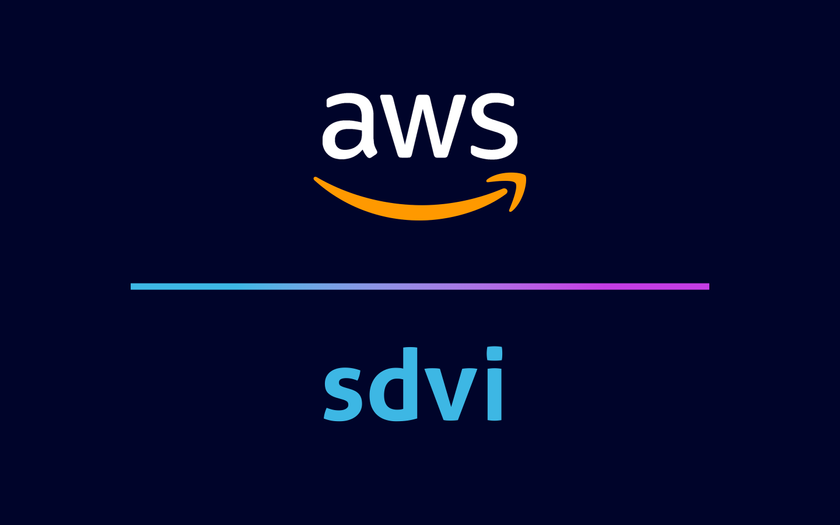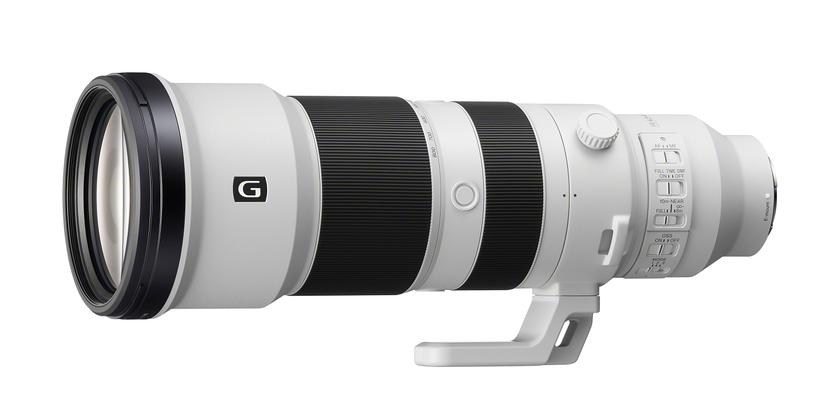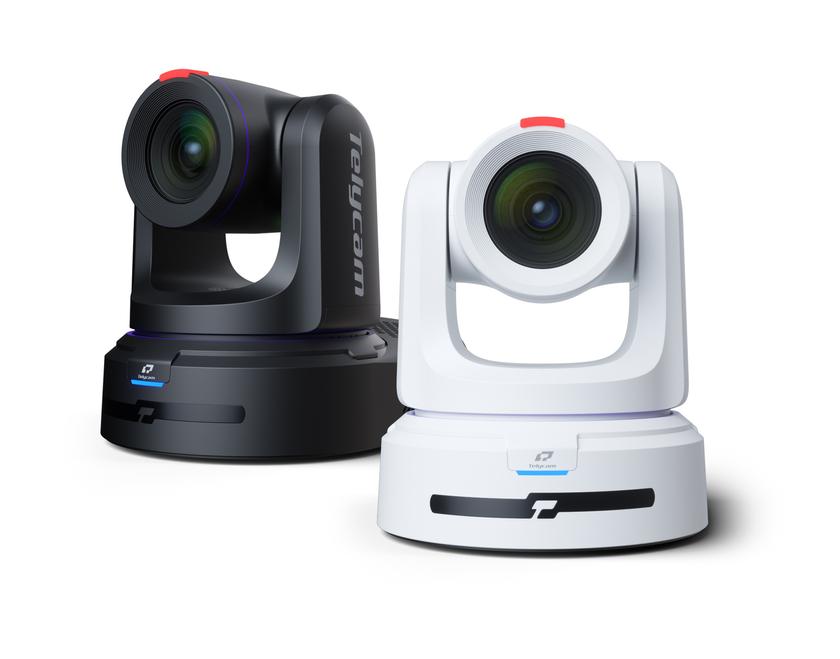Automation
This year's NAB reiterated two constants:
- On the nondelta side, broadcasters continue to look for ways to save money but still look good.
- On the delta side, new technologies allow new content delivery providers to start up operations more quickly and less expensively than in the past.
Two major aspects of automation are workflow and interoperability. The roll-out of automation components in a service-oriented architecture is allowing multiple applications, plug-ins and services to access, share and exchange data and media.
Many see broadcast-specific equipment pushed to the edge of the workflow chain. IT-based technologies, lower storage costs, decreased installation and training expenses, smaller footprints and energy savings are driving automation development. In the larger television universe, it's the actual delivery of content to mobile devices that has vendors' interest. Vendors see increased markets because whether streamed to the Internet, a cell phone or your living room TiVo, some form of automation will be required to manage the stored content and play it to the transmission devices for distribution to the viewer.
One vendor noted that some broadcasters have reversed their attitudes on centralcasting and are now scrambling to get back some local presence. They feel they can centralize traffic but distribute control.
The convergence of traffic and automation through SMPTE S-22 Broadcast Exchange Format (BXF), which standardizes near real-time XML exchanges, promises to accelerate the power and functionality of the broadcast business workflow. This allows the ability to add a last-minute event to an on-air playlist in near real time from the traffic department or to update the as-run as a spot airs and bill the client for it immediately.
There also seems to be a trend toward customers installing systems that use large nearline storage and confine traditional video server technology to edge servers for ingest and transmission. This creates a larger demand for media management in conjunction with traditional automation.
What is newly shippable?
Aveco introduced the Astra Light, a compact master control system designed for low-power or smaller regional stations automated with a 2RU Aveco automation server. This is a scaled down version of Astra, the company's full automation system.
NVerzion's NControl Elite application, unveiled at the show, provides facilities with the control and functionality of a Linux-based master control software suite paired with a Windows-based interface ensuring an easy user interface.
Digital Broadcast featured MediaVault, an archive system with blue laser technology that provides up to 50TB of media storage with a searchable index based on file metadata. Archived material can be played at any access-granted desktop computer. The company also showed MediaView, a server system that provides ongoing verification of off-air feeds.
Showcased for the first time, Dalet Enterprise Edition is a workflow engine designed for open broadcast systems. It offers a set of media ingest, production and distribution tools for radio, TV and interactive media. This product is codec-independent, and its Web services-based API allows it to be integrated into services-oriented architectures, which enables embedded digital media services into corporate-wide applications.
Florical introduced its Web-based gateway into all parts of the automation system with S.M.A.R.T. The company also extended its reporting Decision Maker software suite. These products now have the added capability of e-mailing reports on deviations and the state of the system.
MicroFirst showed further development of its XML near real-time bidirectional interface for data exchange, furthering the bridge to the BXF pending standard for traffic system interfaces. The company's Digital Automation System (DAS) automation protocol allows all data — static (i.e. database), real time and command/control — to be accessed and modified by third parties. MicroFirst also introduced its hierarchical Near Line Storage (NLS) control option for moving content between NAS and video file servers.
Pro-Bel demonstrated Morpheus Foundation, an entry-level automation system that provides essential functionality with an out-of-the-box approach to installation and commissioning. Based on format and device-independent platforms, it provides a self-contained environment to control one to six delivery channels. The company also highlighted developments with its Media Object Server (MOS) Gateway for Morpheus. MOS — which provides an open access interface between newsroom computer systems and third-party devices — can now provide real-time two-way communication between any suitably equipped scheduling system and Morpheus.
Sundance released version 3 of Titan automation. The company's FastBreak NXT series features a streamlined GUI to enhance status monitoring and situational awareness for the operator, which is especially important in the multichannel environment. The company featured two emerging technology demonstrations. The first was the BXF Gateway, which is Sundance's implementation of the soon-to-be adopted SMPTE standard for real-time data exchange between station traffic, content management and automation. The second was Publish to Sundance, an idea that enables media migration — with metadata intact — between Avid's content creation tools and the play-to-air environment under Sundance automation control.
Pebble Beach rebranded Anemone as Neptune Lite. Neptune Lite has the same core code as Neptune, making the upgrade path straightforward. Also, Archive Manager has been renamed Anchor Media Manager. It controls a wider range of tape robotic systems and drive formats but also interfaces and manages nearline disk-based storage. A new redundancy option, ListSync, allows playlists on two independent device controllers to be mirrored automatically. To accompany this capability, Neptune also supports improved SQL database mirroring and automatic changeover between backup servers. Neptune's library of file formats supported by the Neptune Transcode engine has been increased to include QuickTime 7 wrapped MPEG long-GOP and IMX in self-contained and complex movie formats. Neptune's integrated transcode engine can handle files created by Omneon and Harris NEXIO servers.
VCI Solutions, which acquired Digital Transaction Group (DTG) last year, introduced several new products. autoXe MC is the company's new automation software release. The software provides multiple views of the channel stream's schedule, including Icon View for high-level, supervisory view, and management by exception; Timeline View to show the progress of multiple channels across time; and Grid View, with fully configurable schedule and event details. It allows a single operator to manage 10, 20 or 50 channels on one screen. The standard, professional and premium editions support 16, 32 and 64 or more device connections. And users can add, delete or modify device drivers anytime. The software also integrates the SMPTE BXF protocol to exchange data with other systems. Its Virtual Metadata Display extends its management by exception capability to multi-image monitors such as Miranda K2. Metadata identifying the channel stream, the on-air event, source device and notifications are sent to the display.
OmniBus continues to refine its iTX system, a product intended to handle all of the functions of a broadcast master control and playout chain in a single software application. Geared for both SD and HD environments, the system combines standard IT hardware and software to reduce the investment required to launch and operate a channel.
Also featured was OPUS 2.0, which is designed to move the content process from specialized hardware to standard IT platforms. It includes soft-XML support for customized logging and annotation, frame-accurate proxy generation and viewing, full-text indexing and searching, seamless integration with production editing systems like Avid and Final Cut Pro, and standardized Web services data exchange with adjacent systems.
The OPUS 2 Smart Client provides access to content within a Web browser environment from Windows and Mac desktops, allowing unlimited users on an enterprise or global scale to access media and metadata for picture research and shot selection without the need for specialized software.
Crispin has implemented a BXF interface between traffic and automation, based on the emerging SMPTE protocol standard. The system provides a dynamic and automated exchange of the traffic program schedule from ProTrack to Crispin automation, allowing RapidPlayX to automatically load the program schedule for fully automated, on-air presentation.
The company also introduced a new version of Supervisory View, which now incorporates a complete 90-minute timeline view of each channel's playlist. The timeline view highlights potential errors and warnings with specific events related to missing or incorrect material, device errors or warnings when manual intervention is needed.
In addition, Crispin announced a partnership with Rhozet. The partnership resulted in a transcoding server that offers transcoding of broadcast, Web and mobile formats, including MXF, GXF, LXF, Panasonic P2, Sony XDCAM and H.264. The transcoding server handles automatic transcoding between formats for editing, distribution and archival purposes. Additionally, the transcoding server supports playout devices from companies like Avid, Harris Leitch, Omneon, Quantel and Thomson Grass Valley.
Harris highlighted Invenio, an automated metadata system that allows cataloging, search and automated content movement to help unlock content value. Likewise, the company showed D-Series IP device control, which provides support for new content delivery streams, and D-Series remote schedule sync, which ensures coherence of schedules and content between primary and secondary (or backup) sites. The company introduced D-Series and ADC H-Class BXF interoperability. Finally, Harris has shifted to XP across internal operations client user interfaces in the ADC line of products.
Conclusion
Feature consolidation and overlap will continue to occur. In terms of consolidation, there are new products that deliver more functionality in a single box. One vendor noted that encoding, decoding, graphics and automation in a single box might limit the flexibility to choose best of breed products for the various functions. But with processing power increasing as it is and the drive to minimize the workforce, required change does indeed occur in tandem with some nonchanging constants.
Jim Boston is a West Coast consultant.
Get the TV Tech Newsletter
The professional video industry's #1 source for news, trends and product and tech information. Sign up below.













